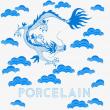
风和树木防风林(英文版)
¥ 66 九品
仅1件
作者Jiao-jun、Zhu、Takeshi、Matsuzaki、Feng-qi 著
出版社中国林业出版社
出版时间2016-02
版次1
装帧平装
上书时间2023-12-25
- 在售商品 暂无
- 平均发货时间 7小时
- 好评率 暂无
- 最新上架
商品详情
- 品相描述:九品
图书标准信息
- 作者 Jiao-jun、Zhu、Takeshi、Matsuzaki、Feng-qi 著
- 出版社 中国林业出版社
- 出版时间 2016-02
- 版次 1
- ISBN 9787503838439
- 定价 40.00元
- 装帧 平装
- 开本 16开
- 纸张 胶版纸
- 页数 235页
- 正文语种 英语
- 【内容简介】
-
The quantity of falling solar energy and the proportion that is absorbed by either the atmosphere or the surface varies greatly from one place to another. This results in regional variations in temperatures both for earth surface and atmosphere. The variation of temperature results in difference of atmospheric pressures.Such difference in pressure leads to the movement of air from high-pressure area to low-pressure area.Therefore, wind is the result of the conversion of solar radiation to thermal energy, and then to kinetic energy. Wind moves in both horizontal and vertical directions and is affected by the conditions of surfaces it encounters. Generally, surface wind extends to 50-100 m above the earth's surface and is dominated by strong mixing, i.e. turbulence. The surface wind influences the habitats for wildlife, the growth of crop and livestock, soil erosion, snow distribution, sand-blown and so on, and causes extreme damages when it is very strong, especially in the sandy areas with arid and semi-arid climates.
Windbreak, as the word itself, can be defined as the barrier used to reduce wind speed, usually consisting of trees and shrubs, or even perennial or annual crops, wooden fences or other materials.Windbreaks when they are reasonably designed can provide large areas of reduced wind speed because they increase the roughness. The areas of wind speed reduced, especially in windy regions, are generally called sheltered zone, which are very useful for wildlife, agriculture and for the people suffering from the severe climates. In fact, there are many functions such as protection against erosion, improving crop production,filtering air and water, ameliorating climatic extremes, improving ecological environment, reducing and ameliorating potential conflicts that may arise, fulfilled by the windbreaks through altering the wind behaviors (wind speed reduction and changes in turbulence rates). - 【目录】
-
1 Relationships between wind and forests
1.1 Introduction
1.2 Effects of wind on forests
1.2.1 Effects of wind damage on forestry
1.2.2 Ecological effects of wind on trees
1.2.3 Effects of wind on forest ecosystem: effects of storms
1.3 Reciprocal effects of trees or forest on wind
1.3.1 Wind in the environment
1.3.2 How trees or forests work on wind
1.4 Tree windbreak
2 Structures of windbreaks
2.1 Introduction
2.2 Windbreak structure
2.2.1 Structural characteristics of windbreaks
2.2.2 Internal structural characteristics
2.2.3 External structural characteristics
2.2.4 Aerodynamic features characterizing windbreaks
2.2.5 Structural characteristics of wide windbreaks
2.3 Methods for measuring structure of windbreaks
2.3.1 Determination of shelterbelt optical porosity
2.3.2 Ptocesses for determination of optical stratification porosity (OSP)
2.4 Optical porosity/OSP estimated by image processing
2.4.1 Error analysis of optical porosity for narrow windbreaks or shelterbelts
2.4.2 OSP estimated from hemispherical photograph by image processing
2.5 Models of shelterbelt structure: optical porosity
2.5.1 Optical porosity and dominant factors of narrow windbreaks or shelterbelts
2.5.2 Fundamental models of shelterbelt optical porosity
2.6 Model of forest belt structure: optical stratification porosity (OSP)
2.6.1 Model of OSP
2.6.2 Model of OSPin a wide forest belt
2.6.3 Determination of vertical strata by OSP
3 Wind models in trees
3.1 Introduction
3.2 Wind speed within a crown of a single tree
3.2.1 Methods and procedures
3.2.2 Relative wind speed within the crown
3.2.3 Vertical wind profile within a single tree crown
3.2.4 Relative wind speed and crown characteristics
3.2.5 Summary
3.3 Wind profiles within and above a wide windbreak
3.3.1 Wind profiles in and above a forest stand
3.3.2 Wind profiles within and above a wide coastal windbreak
3.3.3 Summary
3.4 Wind speed in a coastal forest belt: Horizontal wind profile
3.4.1 General situation of the coastal forest belt
3.4.2 Instrumentation, data collection and calculation
3.4.3 Wind speed at 2 m height in the coastal forest belt
3.4.4 Summary ...........~ _
3.5 Wind speed in coastal forest belts: Vertical wind profile
3.5.1 Vertical wind profile in Ikarashi coastal forest belt
3.5.2 Vertical wind profiles in Aoyama coastal forest belt thinned with different Lhinning rates
3.5.3 Summary
3.6 Wind profiles near the narrow windbreaks
3.6.1 Wind profiles near model windbreak barriers
3.6.2 Wind profiles near poplar tree windbreaks
4 Characteristics of turbulence
4.1 Introduction
4.2 Characteristics of turbulences in the coastal pine forest belt
4.2.1 Methods and procedures
4.2.2 Mean vertical wind profiles (Horizontal velocity)
4.2.3 Turbulence statistics
4.2.4 Analysis of velocity power spectra
4.2.5 Quadrant analysis
4.2.6 Summary
4.3 Turbulence characteristics in the leeward of shelterbelts
4.3.1 Turbulence characteristics around artificial barriers
4.3.2 Turbulence in the leeward side of tree shelterbelts on farmland
4.3.3 Summary
5 Probability of extreme wind
5.1 Introduction
5.2 Methods and procedures
5.2.1 Site
5.2.2 Instrumentation
5.2.3 Data processing
5.3 General characteristics
……
相关推荐
-

风和树木防风林(英文版)
八五品保定
¥ 45.00
-

风和树木防风林(英文版)
八五品沈阳
¥ 60.00
-

教学挂图 风的成因 和 防风林带
八五品兰州
¥ 25.00
-

Library of congress Cataloging in publishing Data《风和防风林》
八五品保定
¥ 100.00
-

小学自然常识教学图片 风的成因和防风林带
八品南阳
¥ 15.00
-

小学自然常识教学挂图-风 全套2幅图:风的成因和防风林带
八品商丘
¥ 18.00
-

小学自然常识教学挂图-风 全套2幅图:风的成因和防风林带
九品兰州
¥ 30.00
-

1965年内蒙古赤峰县航拍照片一张,新建立起的居民新村,环绕着耕地和绿化防风林带。25.5X18.7厘米
九品北京
¥ 380.00
-

169解放日报52年3月新民主主义青年团告全上海青年团员和青年书 山东沿海营造防风林带
九五品烟台
¥ 60.00
-

英文原版The TREE & SHRUB EXPERT树木和灌木专家
八五品济南
¥ 88.00
— 没有更多了 —

























以下为对购买帮助不大的评价